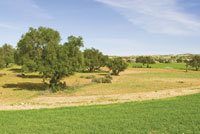 The argan tree (argania spinosa) is perfect for a harsh environment, surviving heat, drought, and poor soil.
The argan tree (argania spinosa) is perfect for a harsh environment, surviving heat, drought, and poor soil.
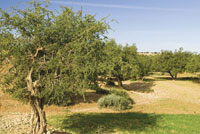 The argan tree is little known outside Morocco, and many Moroccans themselves have never heard of it because it grows only in the south-west of the country – roughly between Essaouira and Agadir, in an area covering 700,000 - 800,000 hectares. But within the area where the argan grows there are about 21 million trees which play a vital role in the food chain and the environment, though their numbers are declining, it is thought the modern rediscovery of this precious oil will halt the decline in tree numbers.
The argan tree is little known outside Morocco, and many Moroccans themselves have never heard of it because it grows only in the south-west of the country – roughly between Essaouira and Agadir, in an area covering 700,000 - 800,000 hectares. But within the area where the argan grows there are about 21 million trees which play a vital role in the food chain and the environment, though their numbers are declining, it is thought the modern rediscovery of this precious oil will halt the decline in tree numbers.
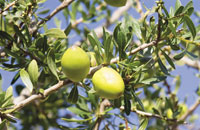 The tree, which is thorny and can reach heights of eight to10 meters, probably originated in Argana, a village north-east of Agadir. It lives longer than the olive and requires no cultivation.
The tree, which is thorny and can reach heights of eight to10 meters, probably originated in Argana, a village north-east of Agadir. It lives longer than the olive and requires no cultivation.
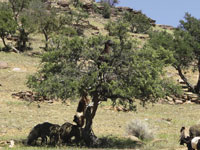 The trunk of the argan is often twisted and gnarled, allowing goats to clamber along its branches and feed on the leaves and fruit.
The trunk of the argan is often twisted and gnarled, allowing goats to clamber along its branches and feed on the leaves and fruit.
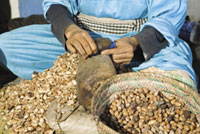
When goats eat the fruit, the fleshy part is digested but the nut remains. Later, the nuts are collected by farmers to produce oil.
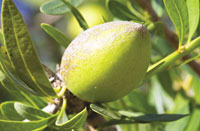
The fruit has a green, fleshy exterior like an olive, but larger and rounder. Inside, there is a nut with an extremely hard shell, which in turn contains one, two, or three almond-shaped kernels.
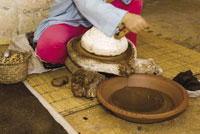 The production of argan oil, which is still mostly done by traditional methods, is a lengthy process; it is said that producing one liter of oil takes 20 hours worth of work.
The production of argan oil, which is still mostly done by traditional methods, is a lengthy process; it is said that producing one liter of oil takes 20 hours worth of work.